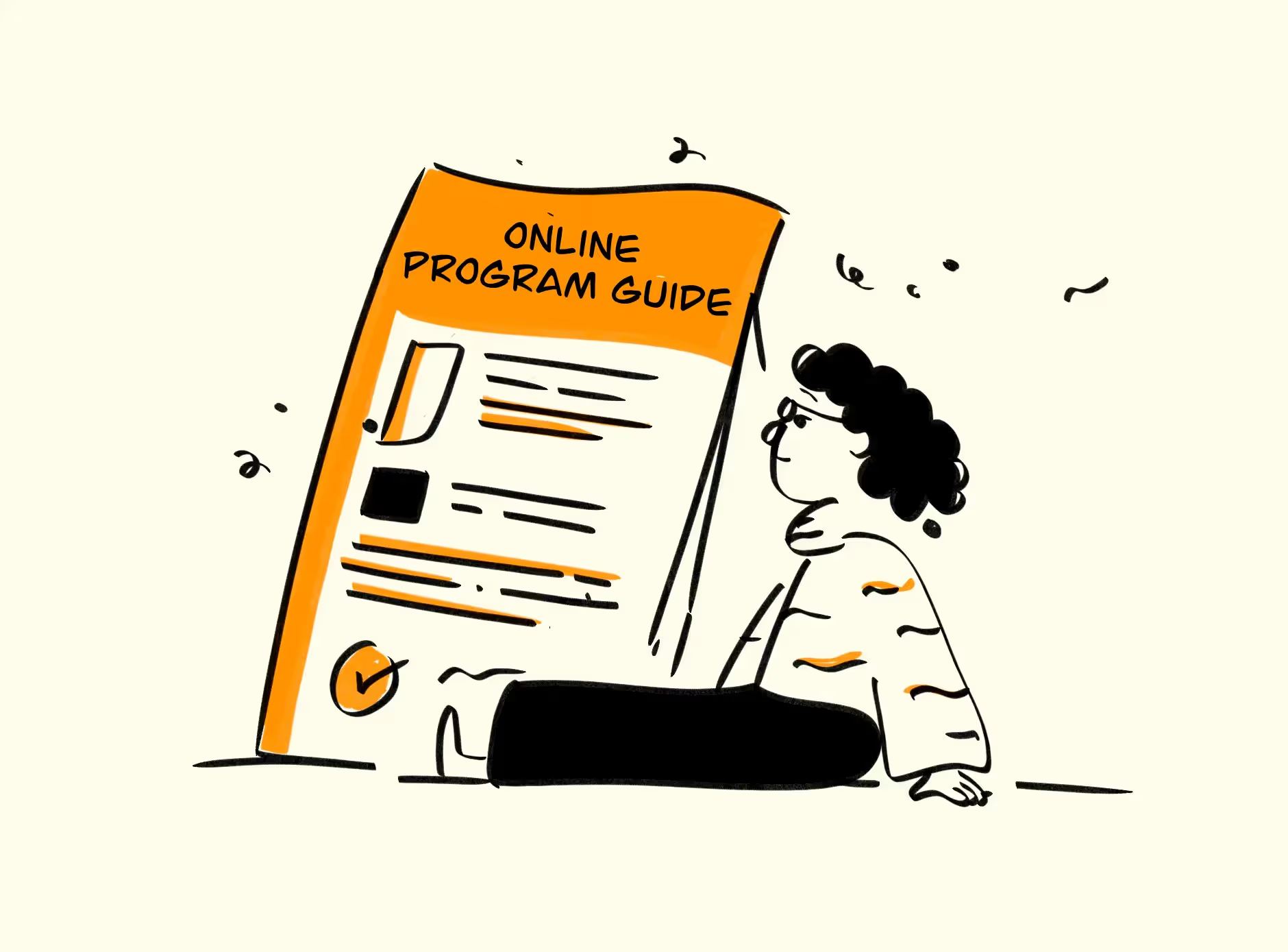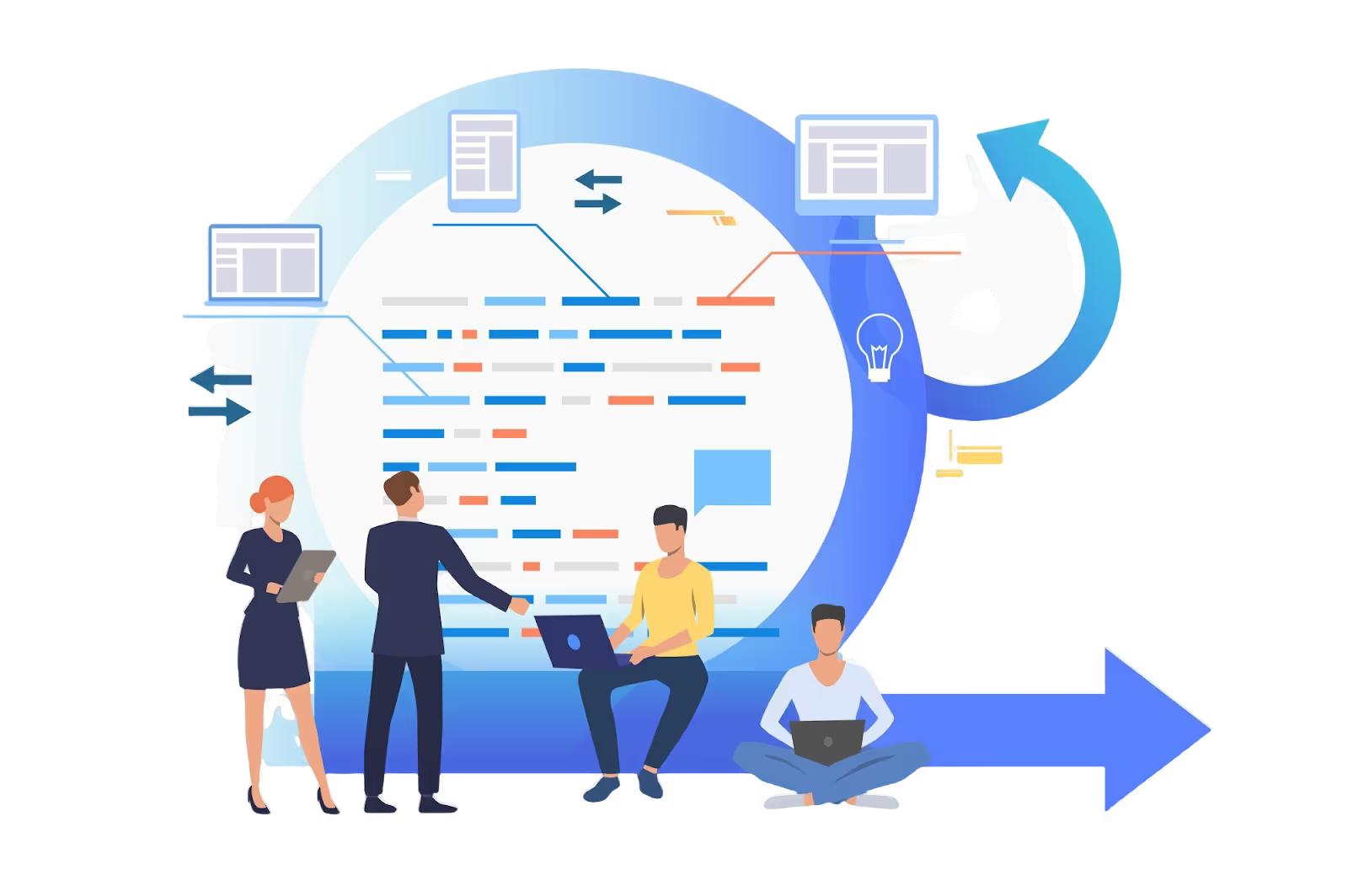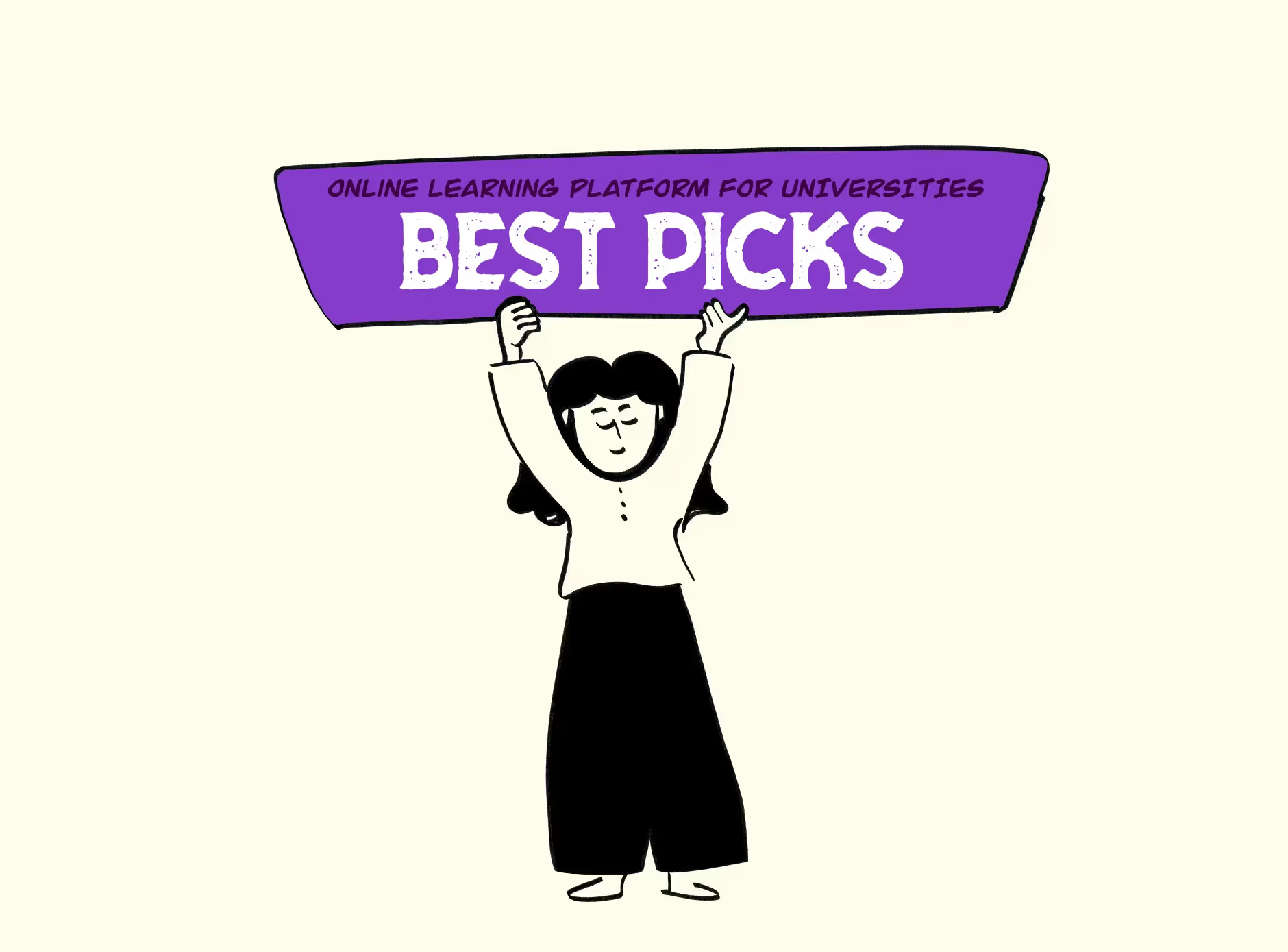




Key Takeaways
- Unlock the Future of Education with OPM: Discover how OPM boosts enrollment by 30-40% within the first year for universities.
- Maximize Student Success with OPM Solutions: Learn how OPM providers support curriculum development, retention, and meeting enrollment targets for online programs.
- Choosing the Right OPM Partner: Explore the four OPM models—revenue share, fee-for-service, hybrid, and in-house—and choose the best fit for your goals.
It is imperative to understand that the current educational environment in higher education is far different from the one that existed a decade or even five years ago; currently, over 70% of colleges and universities in the U.S. are either developing or planning to execute online programs, and many of them work with OPMs to do that.
The OPM market will surpass $7.7 billion in 2025 revenues, and experts expect it to grow because more institutions are aware of the need for transition due to the shift to digital learning.
OPMs are here to stay—they do not merely represent the present tendencies; instead, they transform the future of learning and hold all the keys from course development and promotion to student enrollment and engagement.
For example, according to market research by Eduventures, most colleges and universities that engage an OPM can expect an enrollment increase of 30-40% in the first year of engaging an OPM. Hence, in this guide, you will learn how these academic partnerships can open up fresh possibilities, respond effectively to issues that may arise, and bring your online programs to success.
What is Online Program Management?

Online Program Management (OPM) refers to the outsourcing of services to specialized companies that assist educational institutions in creating and managing online degree programs. These services can include course development, marketing, student recruitment, enrollment management, and program support.
OPM providers work closely with universities to expand their online education offerings, often through a revenue-sharing partnership. This collaboration allows institutions to focus on delivering quality education while reaching a wider audience, such as working professionals and non-traditional students.
Critical Aspects of Online Program Management:
- OPM providers manage all the logistical aspects of offering programs online, including IT infrastructure, curriculum development, enrolment, and student services, meaning that institutions can concentrate on academic delivery.
- Most OPMs work on a revenue share basis, taking an upfront amount to fund the program development and promotion and taking a defined percentage of the tuition income.
- Institutions have the freedom to determine the level of support they need. This can range from comprehensive end-to-end program support to specific areas such as marketing and student services, providing a tailored solution to their unique requirements. As education has shifted online, more universities opt for outsourcing services offered by OPMs. Moreover, it was found that over 60% of online programs in the US are currently managed by OPMs, as indicated by a recent survey conducted by the Babson Survey Research Group.
- OPMs rely on sophisticated technological tools such as Learning Management Systems (LMS), Customer Relationship Management (CRM), and data analytical tools to facilitate program delivery and enhance student experiences.
OPM providers play a pivotal role in keeping institutions informed about current industry practices and trends. By sharing these insights, OPMs assist institutions in designing programs that are responsive to market forces and student demand, ensuring their academic offerings remain relevant and competitive.
How to successfully manage online programs

1. Conduct a Needs Assessment and Develop a Strategy
- Begin with an initial evaluation of your institution's requirements, goals, and objectives for offering online programs.
- Collaborate with the OPM provider to understand your institution's unique specialities, opportunities, and challenges.
- Work together to develop a tailored action plan that aligns with your institution's vision and the specific demands of the online program.

2. Design and Develop the Program
- Once a strategy is in place, delegate the program's design and development to the OPM provider.
- This stage involves creating course materials, integrating appropriate technology, and ensuring the curriculum meets high-quality academic and industry standards.
- Collaborate to ensure the program is relevant, competitive, and aligned with institutional priorities.

3. Implement Marketing, Recruitment, and Enrollment
- The OPM provider will take charge of promoting the program to potential students using targeted marketing strategies.
- They will handle recruitment activities, including generating and following up on leads, guiding students through the enrollment process, and processing applications efficiently.
- Ensure consistent communication with the OPM provider to align marketing and enrollment efforts with your institution’s brand and goals.

4. Provide Comprehensive Student Support and Retention Services
- After students enroll, ensure the OPM provider offers robust support services such as:
- Academic counselling
- Skills development workshops
- Career and internship guidance
- These services are designed to improve student satisfaction, enhance retention rates, and support student success throughout the program.

5. Engage in Continual Data Analysis and Program Adaptation
- Collaborate with the OPM provider to regularly evaluate the program’s performance.
- Analyze data to assess whether the program meets its goals, identify areas of improvement, and address any weaknesses.
- Use insights from the analysis to adapt and refine the program, ensuring its long-term sustainability and competitiveness in the growing online education market.
By following these steps, your institution can establish a successful OPM partnership that leverages the strengths of both partners to create impactful, high-quality online degree programs.
Types of OPM Business Models
OPM partnerships are not a one-size-fits-all solution and can be adapted in several ways to fit educational institutions' requirements. Knowledge of these models can assist institutions in deciding the correct form of partnership that best suits their strategic plans and capacities.
- Revenue Share Model: In this model, the OPM provider will bear most costs in developing and marketing the new online program. In return, the provider gets a share of the tuition fees as revenue for offering the services. This model is perfect for an institution that wants to avoid all the costs of creating a team while getting good partners.
- Fee-for-Service Model: The fee-for-service model provides institutions with a high level of control. They can easily set their budget without the need to account for third-party fees. However, this model may require more resources from the institution to run the program effectively.
- Hybrid Model: A variation of revenue-sharing agreements and service fees, the hybrid structure of this model provides the freedom of how the partnership will be accomplished. The institution may purchase some services in full while only getting a cut for other services to share risk and control.
- In-House OPM Model: The in-house OPM model is the most resource-intensive option. It demands substantial investment in technology, staff, and expertise. However, it also offers the highest level of control over the program. This model best suits large institutions with the resources to establish and support such operations.
Benefits and Challenges of Online Programs
Online programs have become a blessing to education since they provide an opportunity for anyone with internet access worldwide. However, they are also associated with unique opportunities and risks that institutions must effectively manage to achieve their goals.
Benefits

- Flexibility and Accessibility: Students can choose their study hours and location, fitting education into their schedules without disrupting daily commitments. This convenience is particularly beneficial for those with jobs, families, or residing in remote areas.
- Cost-Effective Learning: Online programs significantly reduce expenses by eliminating the need for transportation, housing, and printed materials. Institutions, too, save on physical infrastructure, creating a more affordable learning model.
- Expanded Reach and Enrollment: Institutions offering online programs can attract learners worldwide. This wide reach promotes cultural diversity and allows more students to access quality education.
- Personalized Education: Technologies like adaptive learning platforms customize course content and pace according to each student's strengths and preferences, improving comprehension and engagement.
- Continuous Professional Growth: Working professionals can pursue new skills and qualifications without pausing their careers. These programs provide a practical way to stay competitive in their industries.
- Access to Specialized Courses: Online programs make niche subjects and expert instructors available to students everywhere. This access helps individuals pursue unique career paths and specialized fields of study.
- Skill Development in Technology: Participation in online learning environments helps students develop critical digital skills such as virtual collaboration and resource management, preparing them for modern work environments.
- Eco-Friendly Education: By reducing the need for travel and physical facilities, online programs contribute to environmental conservation and align with sustainable practices.
- On-Demand Resources: Learners benefit from 24/7 access to recorded lectures, notes, and interactive tools, making it easier to review material and work at their own pace.
- Inclusive Learning Opportunities: Online platforms incorporate diverse multimedia formats and tools, accommodating different learning styles and accessibility needs, ensuring all students can succeed.
Challenges

- Technology Barriers: Not all students can access the Internet or have the required devices; hence, explain why some students might feel left behind when using these devices.
- Lack of Engagement: The disadvantage of online programs is that they often have low civic engagement, resulting in students' low motivation and low dropout rates in contrast to classroom programs.
- Quality Assurance: Some difficulties encountered when developing and delivering online programs are as follows: ensuring the academic quality of online programs and evaluating the learner's performance can be challenging.
- Isolation: There needs to be direct communication between the student and the faculty member during online programs, which makes the learners feel lonely and without group affiliation.
- Cheating and Academic Integrity: It is easier to uphold honesty in an academic partnership in a traditional classroom than in an OPM business model, where institutions must search for ways to deter cheating and provide accurate evaluations.
Strategies for effective online program management
Indeed, managing an online program is quite delicate and calls for a sound strategy to meet the needs of students, faculty, and the institution. With proper strategy being put in place, institutions can improve the quality of their full-scale online programs and classes, increase students' engagement, and anticipate rapid growth.
- Focus on Student-Centred Design: Future online courses designed for students should incorporate pro-student features, making the content understandable and relevant. Easy navigation, adaptability to the studying process, and responsive feedback will enhance the experience and progress of students.
- Ensure A Good Quality Instructional Course: The overall quality of course content is the core life support of any online program or course. Engage with other professional instructional designers and domain specialists to develop academically challenging yet fun and practical classes. It is equally important to provide updates and constantly enhance the features of quality programs to ensure they remain relevant and valuable.
- Effective Use of Data for Consistent Improvement: To address this, a data analytics system should be implemented, which will allow the consistent tracking of student progress and subsequent changes in behaviour based on the findings. Engagement rates, completion rates, or student feedback are essential in determining problematic areas in programs and rectifying them early.
- Improve Centralised Faculty Development: Educate and train all the faculty to ensure they are well-equipped in the context of online instruction. This includes techniques used in teaching with and through technologies, lesson planning and designing content in a web-based environment, and interacting with students in an online classroom.
- Build A Strong Following Online: Teaching groups that nurture a feeling of community are highly recommended to increase student engagement and reduce dropout rates among online students. It can be done by promoting cooperation in classes and assignments, discussions, and online conferences. There is always a need to cultivate healthy relationships among the institution's students, faculty, and staff to recruit students and nurture a healthy learning atmosphere.
How to Choose the Best OPM Provider
Selecting an appropriate Online Program Management (OPM) service partner is a strategic decision that may strongly influence the outcome of online programs. When choosing the right partner, one should consider several technical or operational factors that will help determine whether the partnership will be efficient.
- Evaluate LMS Capabilities: Check that the offered OPM provider has an easily scalable and adaptable LMS that enables smooth content distribution and encourages cooperation with other instruments. Some things to look for include access to them through mobile applications or platforms, easy-to-use interfaces, and data analysis capabilities.
- Understand the Revenue Model: Assess whether the full revenue sharing model, fee-for-service, or other model is appropriate for the OPM partnership that has been adopted. Select a hybrid or fee-for-service model based on your institution's financing strategies and approach to costs and revenues.
- Explore: Marketing and Recruitment Approaches: What is the capacity of an online program manager of education announced by the OPM provider in marketing, and how does it attract candidates? Search for professionals specializing in digital marketing, lead generation, and enrollment management in your programs.
- Consult on Strong Student Support Services: The final factor that can contribute to the effectiveness of the online certificate program is the provision of comprehensive student support services. Assess the continuing and professional education provider's academic services and resources, such as advice, helpdesks, and initiatives aimed at student continuation to foster the students' comprehensive support during learning.
- Analyse Data and Reporting Efficiency: This entails using everyday data, analytics, and insights that provide valuable information to organizations and lead to improving processes. Check that the OPM provider provides extensive analytical and reporting capabilities that enable you to track program effectiveness, student activity, and other critical factors in your education department in real-time.
- Think About Technology Integration and Readiness for Business Growth: Namely, choosing software that can smoothly integrate with the existing systems and expand with your programs is crucial. Additionally, verify if the OPM provider can readily connect to your institution's current technology and if it can handle more integration in the future without a decline in quality.
- Review Content Development Expertise: The signal you receive through the Internet can affect the quality of your programs, depending on the content. Ensure that the OPM provider you select specializes in course development and has experience that includes multimedia, instructional technology, and academic guidelines.
Hence, relying on these technical and operational factors, you can choose an OPM provider that will not only match your own institution's current requirements. Still, you will also help your institution stay ahead in the constantly growing and increasingly competitive field of online education.
The Future of Online Program Managers

Online program management is evolving as Online Program Managers (OPMs) take on expanded roles to meet the demands of modern education. Their responsibilities now include strategic initiatives that enhance institutional success and improve student experiences. Here’s a closer look at what the future holds:
- Artificial Intelligence and Machine Learning: These technologies will transform online program management by creating more personalized learning experiences, improving predictive analytics, and streamlining administrative processes to better manage online programs.
- Advanced Data Analysis: OPMs will integrate improved data tools and performance metrics to gain deeper insights into student outcomes, program efficiency, and market dynamics.
- Rising Competition: As the field grows, OPMs will focus on delivering unique learning experiences, incorporating virtual and augmented reality tools, and creating solutions to accommodate students with varying needs, including those requiring accessibility features.
- Blockchain Technology: This will become essential in credentialing processes and ensuring secure frameworks for online program management.
- International Expansion: Online program management will extend beyond national boundaries, requiring OPMs to align programs with global educational goals while addressing the needs of international learners.
Online program management will continue to grow as a vital element in delivering effective and impactful education, meeting the needs of students and institutions alike.
Build a Successful Online Program Management Team with EdisonOS

Continually evolving with trends in online learning, EdisonOS equips institutions with the tools needed to create and manage impactful online programs.
- Advanced LMS Features: Support for high-resolution videos, SCORM content, and custom reports.
- Website Builders: Provide engaging, interactive learning experiences.
- Scalability: tailored solutions to meet unique learning needs while ensuring compliance with regulations.
With EdisonOS, institutions gain a competitive advantage by delivering influential and sustainable educational programs.

Tutors Edge by EdisonOS
in our newsletter, curated to help tutors stay ahead!
Tutors Edge by EdisonOS
Get Exclusive test insights and updates in our newsletter, curated to help tutors stay ahead!
Recommended Reads
Recommended Podcasts











.png)
.webp)
